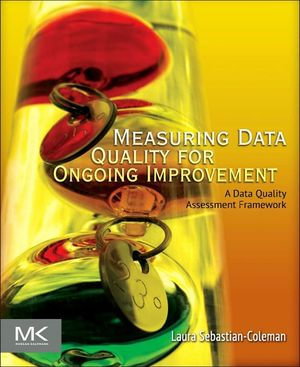
eTEXT
Measuring Data Quality for Ongoing Improvement
A Data Quality Assessment Framework
eText | 31 December 2012
At a Glance
eText
$58.95
Instant online reading in your Booktopia eTextbook Library *
Read online on
Not downloadable to your eReader or an app
Why choose an eTextbook?
Instant Access *
Purchase and read your book immediately
Read Aloud
Listen and follow along as Bookshelf reads to you
Study Tools
Built-in study tools like highlights and more
* eTextbooks are not downloadable to your eReader or an app and can be accessed via web browsers only. You must be connected to the internet and have no technical issues with your device or browser that could prevent the eTextbook from operating.
The Data Quality Assessment Framework shows you how to measure and monitor data quality, ensuring quality over time. You'll start with general concepts of measurement and work your way through a detailed framework of more than three dozen measurement types related to five objective dimensions of quality: completeness, timeliness, consistency, validity, and integrity. Ongoing measurement, rather than one time activities will help your organization reach a new level of data quality. This plain-language approach to measuring data can be understood by both business and IT and provides practical guidance on how to apply the DQAF within any organization enabling you to prioritize measurements and effectively report on results. Strategies for using data measurement to govern and improve the quality of data and guidelines for applying the framework within a data asset are included. You'll come away able to prioritize which measurement types to implement, knowing where to place them in a data flow and how frequently to measure. Common conceptual models for defining and storing of data quality results for purposes of trend analysis are also included as well as generic business requirements for ongoing measuring and monitoring including calculations and comparisons that make the measurements meaningful and help understand trends and detect anomalies.
- Demonstrates how to leverage a technology independent data quality measurement framework for your specific business priorities and data quality challenges
- Enables discussions between business and IT with a non-technical vocabulary for data quality measurement
- Describes how to measure data quality on an ongoing basis with generic measurement types that can be applied to any situation
Read online on
ISBN: 9780123977540
ISBN-10: 0123977541
Series: The Morgan Kaufmann Series on Business Intelligence
Published: 31st December 2012
Format: ePUB
Language: English
Number of Pages: 376
Publisher: Morgan Kaufmann
You Can Find This eBook In
This product is categorised by
- Non-FictionComputing & I.T.Computer Science
- Non-FictionComputing & I.T.Graphical & Digital Media Applications3D Graphics & Modelling
- Non-FictionComputing & I.T.DatabasesData Capture & Analysis
- Non-FictionComputing & I.T.Computer Programming & Software DevelopmentDatabase Programming
- Non-FictionReference, Information & Interdisciplinary SubjectsResearch & InformationData Analysis
- Non-FictionBusiness & ManagementOperational Research
- Non-FictionLibrary & Info SciencesLibrary & Information Services
- Non-FictionComputing & I.T.Information Technology General Issue
- Non-FictionLibrary & Info SciencesLibrary























